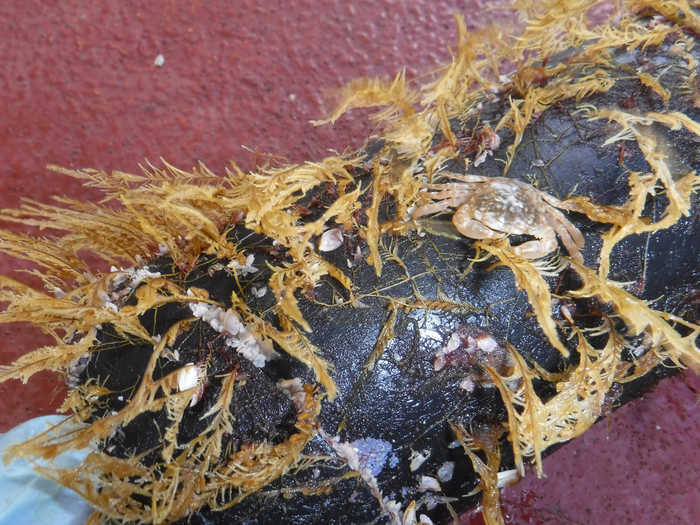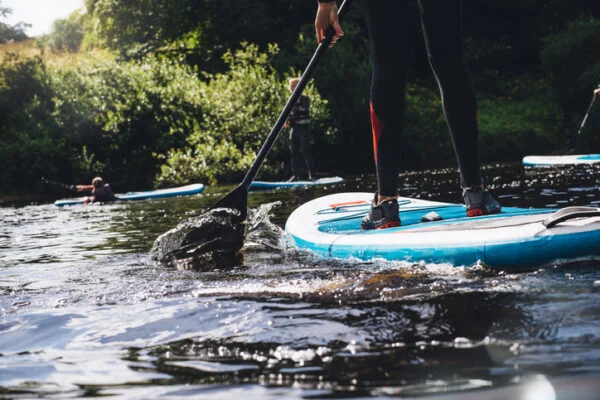During the first year of the Covid-19 pandemic, Ocean Voyages Institute founder Mary Crowley and her team managed to collect a record-breaking 103 tonnes of plastics and other debris from the North Pacific Subtropical Gyre.
She shipped some of those samples to SERC’s Marine Invasions Lab. There, Linsey analysed the species that had colonised them.
She found many coastal species—including anemones, hydroids and shrimp-like amphipods—not only surviving, but thriving on marine plastic.
A new ocean habitat
For marine scientists, the very existence of this ‘new open ocean’ community is a paradigm shift.
‘The open ocean has not been habitable for coastal organisms until now’, said SERC senior scientist Greg Ruiz, who heads the Marine Invasions Lab where Linsey worked. ‘Partly because of habitat limitation — there wasn’t plastic there in the past — and partly, we thought, because it was a food desert.’
The new discovery shows that both ideas do not always hold true. Plastic is providing the habitat and somehow, coastal rafters are finding food.
Greg said scientists are still speculating exactly how—whether they drift into existing hot spots of productivity in the gyre, or because the plastic itself acts like a reef attracting more food sources.
Now, scientists have another shift to wrestle with: how these coastal rafters could shake up the environment.
Disrupting ocean ecosystems
The open ocean has plenty of its own native species, which also colonise floating debris. The arrival of new coastal neighbours could disrupt ocean ecosystems that have remained undisturbed for millennia.
‘Coastal species are directly competing with these oceanic rafters’, Greg said. ‘They’re competing for space. They’re competing for resources. And those interactions are very poorly understood.’
And then there is the invasive-species threat. Scientists have already seen that begin to play out with Japanese tsunami debris, which carried organisms from Japan to North America.
Vast colonies of coastal species floating in the open ocean for years at a time could act as a new reservoir, giving coastal rafters more opportunities to invade new coastlines.
‘Those other coastlines are not just urban centres….That opportunity extends to more remote areas, protected areas, Hawaiian Islands, national parks, marine protected areas’, Greg said.
Plastic pollution transforming life
The authors still do not know how common these ‘neopelagic’ communities are, whether they can sustain themselves or if they even exist outside the North Pacific Subtropical Gyre.
But the world’s dependence on plastic continues to climb: scientists estimate cumulative global plastic waste could reach over 25 billion metric tonnes by 2050.
With fiercer and more frequent storms on the horizon due to climate change, the authors expect even more of that plastic will get pushed out to sea.
Colonies of coastal rafters on the high seas will likely only grow. This long-overlooked side-effect of plastic pollution, the authors said, could soon transform life on land and in the sea.
 Play Video about This Rock Might Just Save The World
Play Video about This Rock Might Just Save The World Play Video about Play 2 hours of rock
Play Video about Play 2 hours of rock Play Video about Play 2 hours of brook
Play Video about Play 2 hours of brook Play Video about Play 2 hours of sheep
Play Video about Play 2 hours of sheep











































